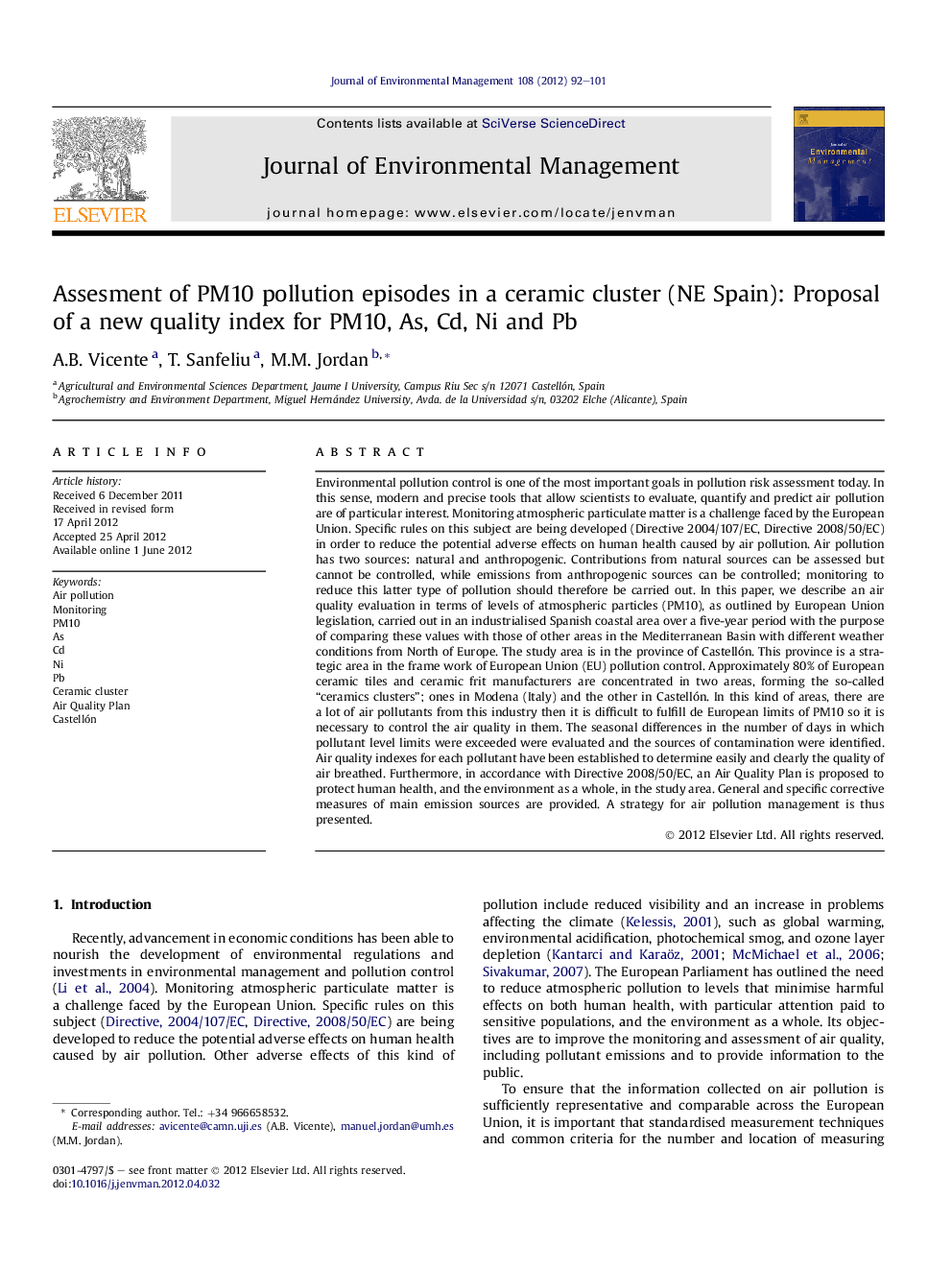| Article ID | Journal | Published Year | Pages | File Type |
|---|---|---|---|---|
| 1056774 | Journal of Environmental Management | 2012 | 10 Pages |
Environmental pollution control is one of the most important goals in pollution risk assessment today. In this sense, modern and precise tools that allow scientists to evaluate, quantify and predict air pollution are of particular interest. Monitoring atmospheric particulate matter is a challenge faced by the European Union. Specific rules on this subject are being developed (Directive 2004/107/EC, Directive 2008/50/EC) in order to reduce the potential adverse effects on human health caused by air pollution. Air pollution has two sources: natural and anthropogenic. Contributions from natural sources can be assessed but cannot be controlled, while emissions from anthropogenic sources can be controlled; monitoring to reduce this latter type of pollution should therefore be carried out. In this paper, we describe an air quality evaluation in terms of levels of atmospheric particles (PM10), as outlined by European Union legislation, carried out in an industrialised Spanish coastal area over a five-year period with the purpose of comparing these values with those of other areas in the Mediterranean Basin with different weather conditions from North of Europe. The study area is in the province of Castellón. This province is a strategic area in the frame work of European Union (EU) pollution control. Approximately 80% of European ceramic tiles and ceramic frit manufacturers are concentrated in two areas, forming the so-called “ceramics clusters”; ones in Modena (Italy) and the other in Castellón. In this kind of areas, there are a lot of air pollutants from this industry then it is difficult to fulfill de European limits of PM10 so it is necessary to control the air quality in them. The seasonal differences in the number of days in which pollutant level limits were exceeded were evaluated and the sources of contamination were identified. Air quality indexes for each pollutant have been established to determine easily and clearly the quality of air breathed. Furthermore, in accordance with Directive 2008/50/EC, an Air Quality Plan is proposed to protect human health, and the environment as a whole, in the study area. General and specific corrective measures of main emission sources are provided. A strategy for air pollution management is thus presented.
► Air quality assessment in terms of PM10 is described as outlined by EU legislation. ► The sources of contamination are identified. ► Air quality indexes have been established in order to determine the quality of air with ease and clarity. ► An Air Quality Plan is proposed for the protection of human health. ► General and specific corrective measures for the main emission sources are provided.
